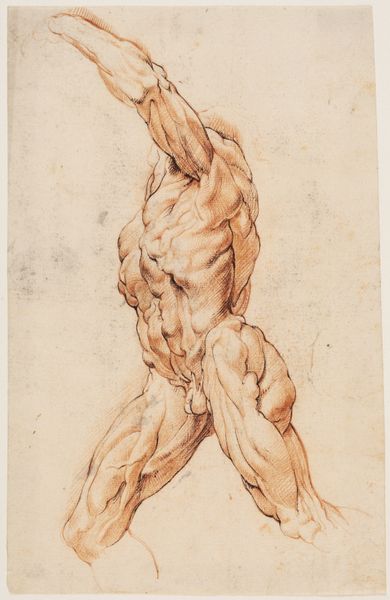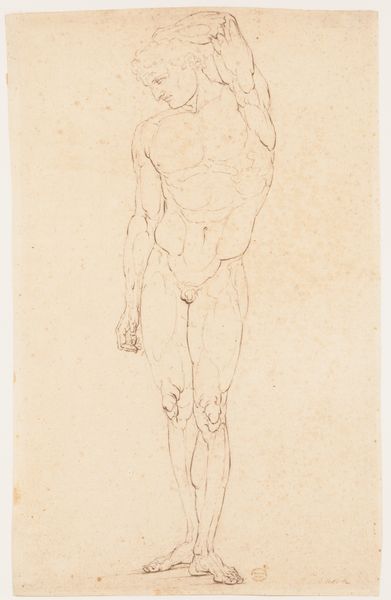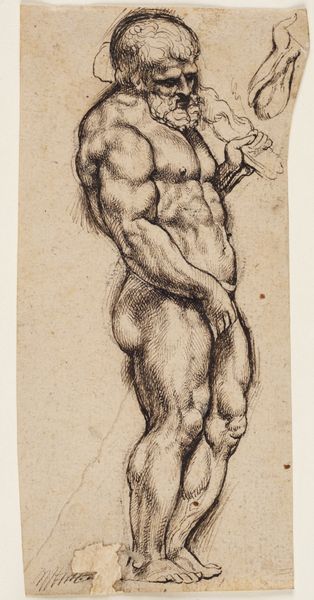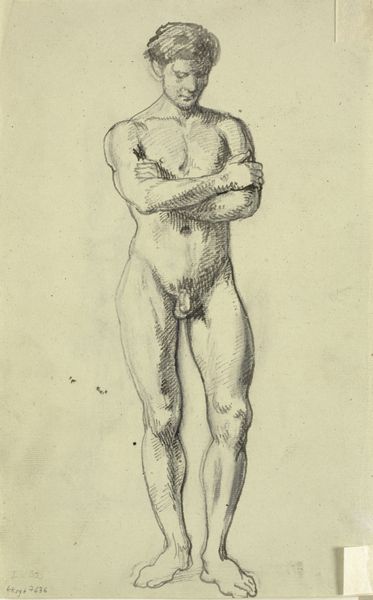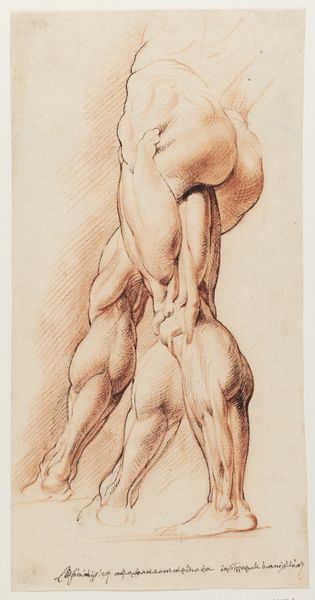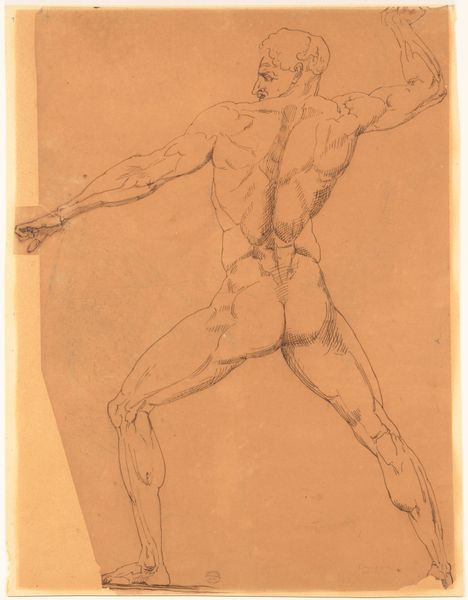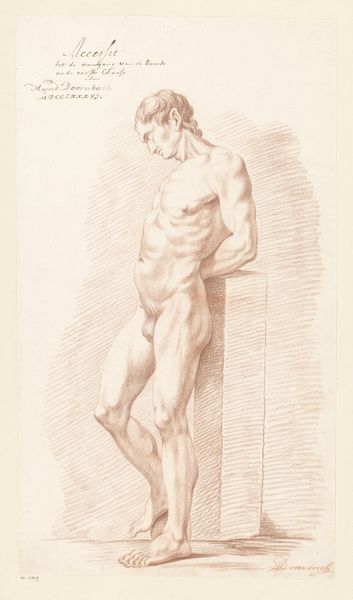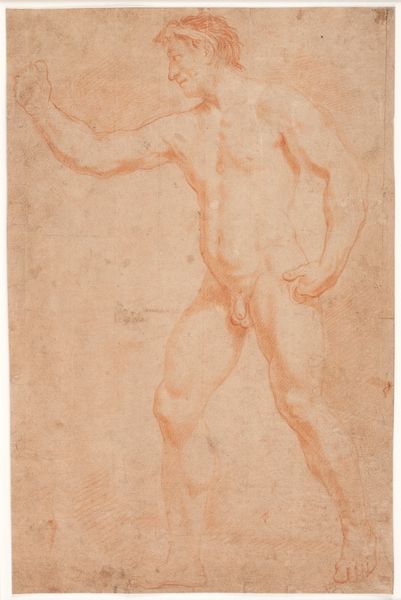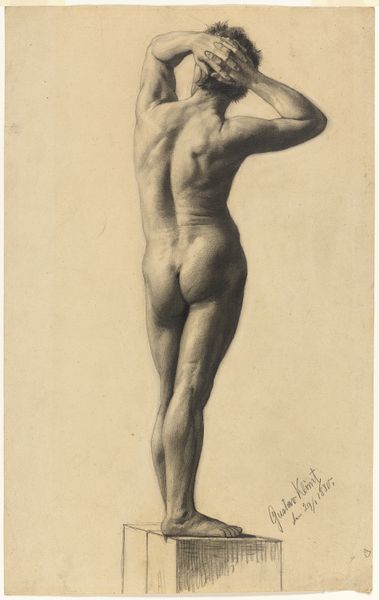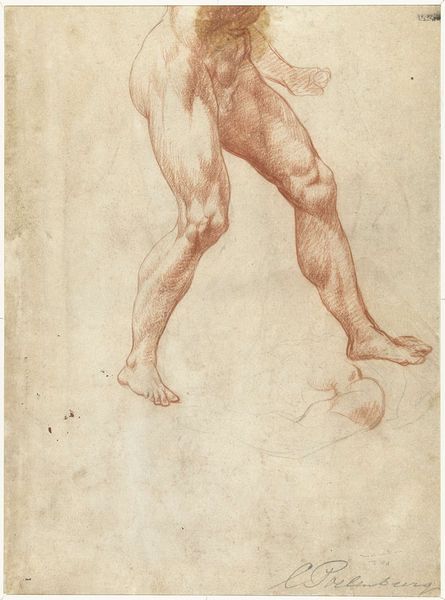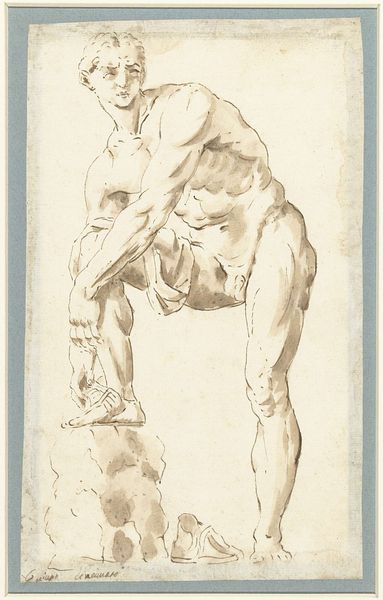
drawing, pencil
#
portrait
#
pencil drawn
#
drawing
#
baroque
#
charcoal drawing
#
figuration
#
pencil drawing
#
pencil
#
portrait drawing
#
academic-art
#
realism
Dimensions: 30 mm (height) x 162 mm (width) (bladmaal)
Willem Panneels created this anatomical study on paper using pen and ink sometime in the early 17th century. Here, the artist skillfully depicts a flayed human figure, revealing the intricate network of muscles beneath the skin. The choice of pen and ink allows for a high degree of detail, capturing the texture and form of the muscles with remarkable precision. Look closely, and you'll notice the delicate lines and shading that give the figure a sense of depth and volume. But this drawing is more than just a technical exercise. It reflects a growing interest in the natural world during the Renaissance and Baroque periods, and the rise of scientific inquiry as a means of understanding the human body. Anatomical studies like this were essential tools for artists and scientists alike, allowing them to explore the inner workings of the human form and to push the boundaries of knowledge and representation. It's a reminder that art and science are not always separate disciplines, but can often inform and enrich each other.
Comments
No comments
Be the first to comment and join the conversation on the ultimate creative platform.
